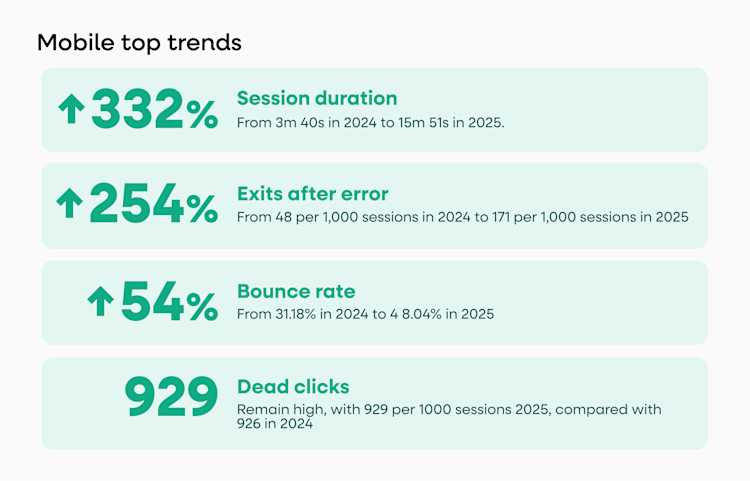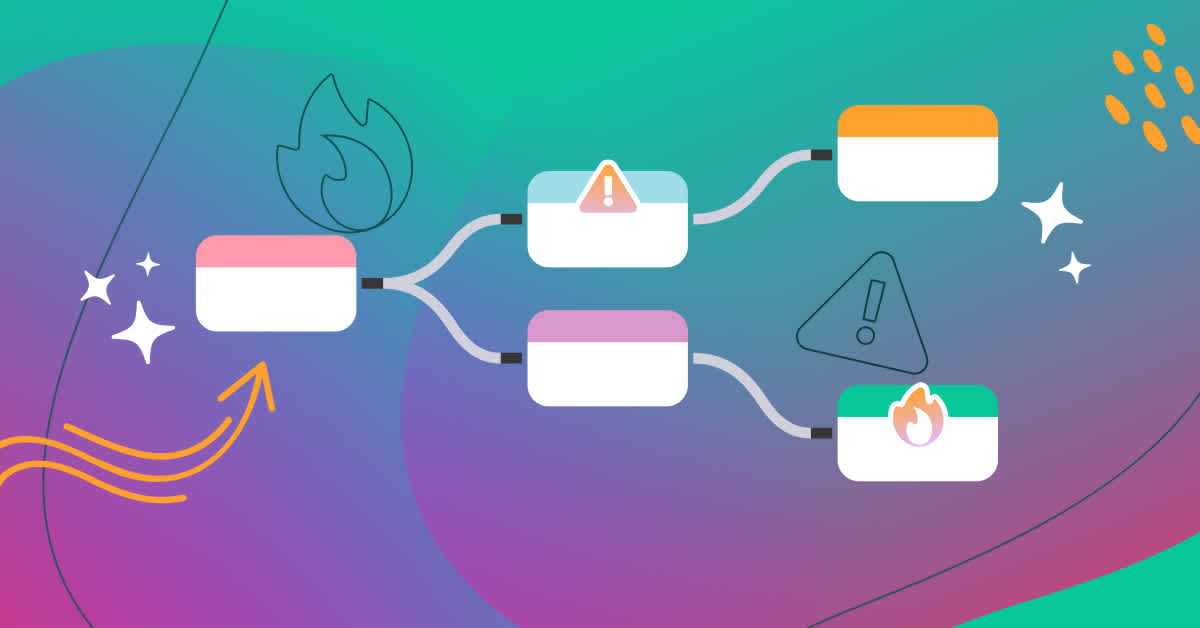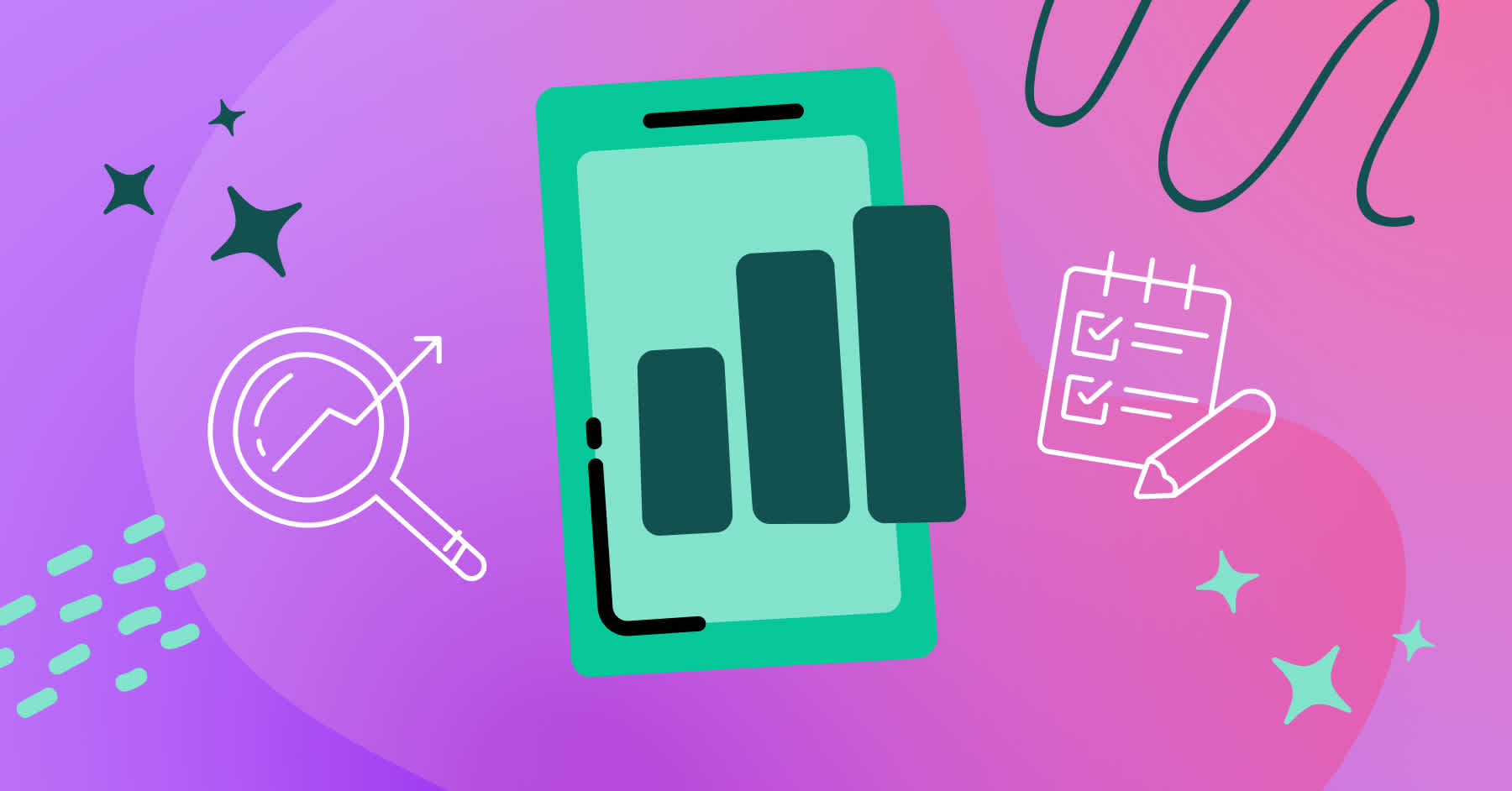The data is in, and it tells a complicated story. Data from over 4 billion digital sessions across all types of industries shows that mobile session duration has skyrocketed by over 300%. People are spending more time in mobile apps than ever before, which sounds like a clear win.
But the more time they spend, the more frustration they seem to find. Metrics like error-driven exits and bounce rates are also climbing.
To put it simply, more engagement uncovers more problems.
Success in 2025 means looking past surface-level stats to understand the why behind user behavior. It’s time to explore the real-world challenges your users face, from spotty network connections to the quirks of modern development frameworks.
Let's look at the trends that are defining the mobile experience in 2025.
1. Users are spending more time in-app than ever before
Apps have become the primary way users interact with businesses, whether they’re browsing, buying, or booking. Session duration has jumped an astounding 332% in the last year, and 64% of consumers now say they prefer a brand’s mobile app over its website.
But increased engagement isn’t necessarily something to celebrate. Experts caution that longer sessions may not always indicate success, they may signal users struggling to complete tasks under less-than-ideal conditions.
2. Error rates are rising as users take apps "into the wild"
Mobile apps need to be able to handle less-than-ideal conditions because their users don’t always operate in perfect conditions. People launch apps while juggling tasks, dealing with unstable networks, or using a wide range of devices with different performance capabilities. These everyday scenarios often introduce issues that never surfaced in QA or internal testing environments.
The data reflects this. From 2024 to 2025, error-related session exits jumped by 254%. To catch and resolve these edge cases, teams need high-fidelity visibility into how their app performs in the real world.
3. Bounce rates are climbing as user patience hits an all-time low
Mobile users are showing less tolerance than ever for friction; bounce rates are up 54% year-over-year. If they encounter a confusing flow, sluggish screen, or tap something that doesn’t respond, they’re gone.
Polished, responsive digital products have set a new baseline, and anything less feels broken by comparison. That makes the first experience a make-or-break one. The moment something doesn’t work, users are gone, and the next alternative is already in their pocket.
4. Using AI to create personalized experiences
In 2025, the apps that succeed aren’t just fast or bug-free; they feel personal. They engage an audience, boost conversion rates, and increase retention.
True mobile personalization goes beyond basic user preferences or A/B testing. It’s about using machine learning to understand each user’s behavior in real time and adapt their experience accordingly. Whether that means suggesting content, optimizing a checkout flow, or rearranging an onboarding journey on the fly, AI helps apps feel like they’re tailored to the individual.
Although delivering highly personalized experiences sounds like a tedious process, tools like Fullstory’s StoryAI are making it increasingly accessible. StoryAI turns massive volumes of behavioral data into precise insights that help teams understand not just what users are doing, but why. It highlights patterns of friction, pinpoints moments of drop-off, and surfaces high-impact opportunities to tailor the user experience automatically—so you spend less time digging and more time making impactful moves.
But insights alone don’t drive results. That’s where Fullstory Anywhere: Activation comes in. As users interact with your app, Activation streams live signals into your existing tools from CX platforms like Intercom or Salesforce to personalization engines and marketing automation. That means your team (and your tech) can respond in real time to what each user is experiencing:
5. Integrated mobile tech is the future
Mobile isn’t just a channelm it’s the primary experience platform. As such, it’s important to make sure your tech ecosystem is optimized for mobile data exchange.
Fullstory is built to integrate with your stack. It supports the most widely used iOS, Android, and cross-platform frameworks, giving teams a unified view of user interactions across desktop and mobile. With behavioral data from every touchpoint in one place, teams can move faster, reduce context-switching, and inform decisions across product, CX, and marketing.
Learn how Fullstory’s tech stack integrations can help you make the most of your data.
6. Designing mobile applications for privacy and trust
Privacy isn’t just a legal requirement; it’s directly tied to whether users feel safe using your product. With people spending more and more time in apps, the responsibility to protect their personal data is only increasing.
But many traditional mobile analytics tools for capturing user behavior introduce unnecessary risk. Screen recordings or raw screenshots often collect more than intended, including passwords, credit card information, or other personal data. Fixing it later with redaction is unreliable. Once sensitive data has been captured, control is already lost.
The better approach is to design for privacy from the start.
Fullstory, for example, avoids capturing raw screen data altogether, focusing instead on rendering and behavioral signals that offer insight without compromising privacy. With this approach, you can capture what matters, skip what doesn’t, and give your users the confidence that their data is handled with care.
7. Embracing the mobile commerce revolution
Mobile commerce has become deeply embedded in daily life. According to Shopify, mobile commerce volume is expected to hit $710.4 billion this year. People scroll storefronts while commuting, restock essentials between meetings, and complete entire purchases from the couch. It’s fast, it’s convenient, and for many users, it’s the preferred way to shop.
But that flexibility introduces new variables, like inconsistent network conditions, device limitations, and distracted browsing, that can complicate the checkout journey. These real-world contexts often expose friction that’s tough to catch in a controlled QA environment. The challenge for brands isn’t just building a beautiful checkout flow, but ensuring that experience holds up in the wild.
The observer effect: How you see the problem changes the experience
So how do you diagnose these issues? Many teams default to traditional screen recording tools for session replay, but they often do more harm than good.
The old way is a performance killer
Constantly taking screenshots or recording the screen is a massive drain on your user's device. It kills their battery and eats up their data plan, creating the very performance lags and frustration you’re trying to fix. It’s like trying to diagnose a patient by making them run a marathon.
It’s also a privacy nightmare. When you capture the entire screen, you capture everything, including sensitive personal information. Trying to redact that data after capturing it is a fundamentally flawed approach. Once private data leaves the device, the damage is already done.
There’s a better way to see what’s happening
Instead of capturing pixels, modern solutions capture the underlying rendering instructions of an app.
Think of it like this: a traditional screen recorder is a photographer taking a huge, high-resolution photo of a scene. The modern approach is more like a courtroom sketch artist, capturing the essential details with a few precise, lightweight strokes. The result is a high-fidelity recreation of the user experience that is performant and lightweight.
This method also allows you to be private by default. By capturing only what’s needed to reconstruct the session, you can avoid collecting sensitive data from the very beginning.
Case study: CINC reduced churn in mobile app experiences with Fullstory
CINC, a platform that helps real estate agents generate, nurture, and close leads, turned to Fullstory to enhance the performance of its mobile experience and streamline customer support. By tapping into behavioral insights and custom iOS metrics, CINC quickly spotted friction, improved new feature performance, and accelerated support workflows.
The results?
25% faster resolution time for mobile-related issues
20% increase in customer satisfaction
See the full story across mobile and web
Great digital experiences don’t happen in silos. Users move between mobile and web without thinking twice, and your team needs clarity across every touchpoint.
With Fullstory, you get a complete view of the user journey, no matter where it happens. From friction in a mobile form to a stalled checkout on desktop, you’ll understand what’s really going on, why it’s happening, and what to do next.
→ Curious how the experiences you create for your users compare to others in your industry? Our 2025 Digital Benchmark Report breaks down trends from billions of sessions across Ecommerce, Financial Services, Travel & Hospitality, Food & Beverage, Gaming, and more. Access the Benchmark Report







